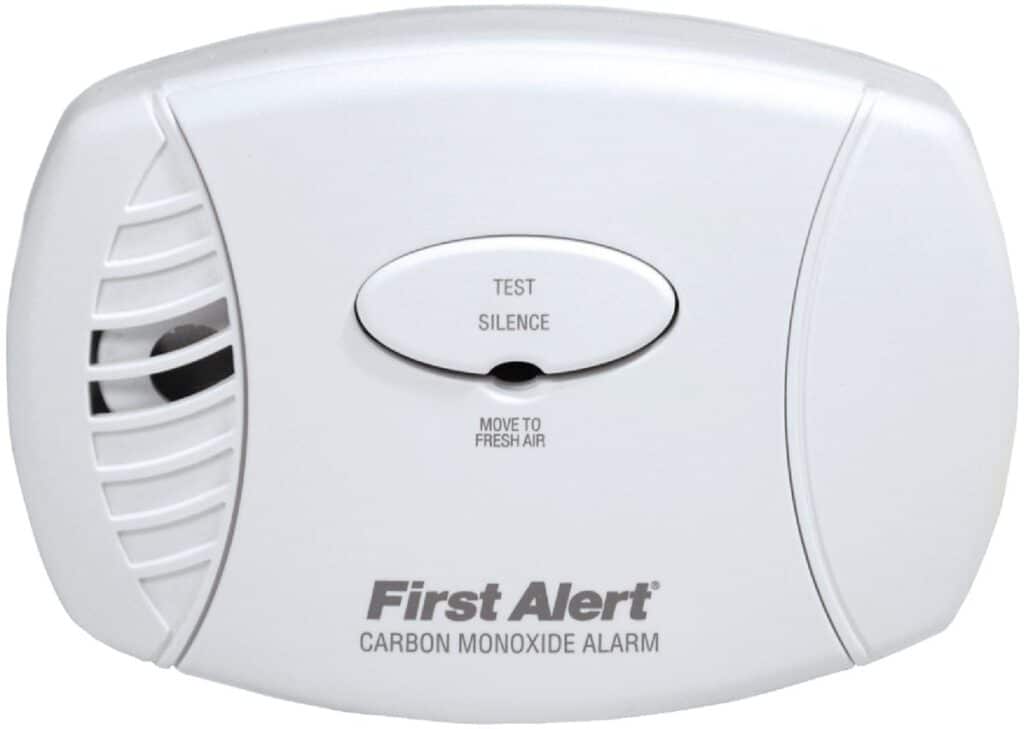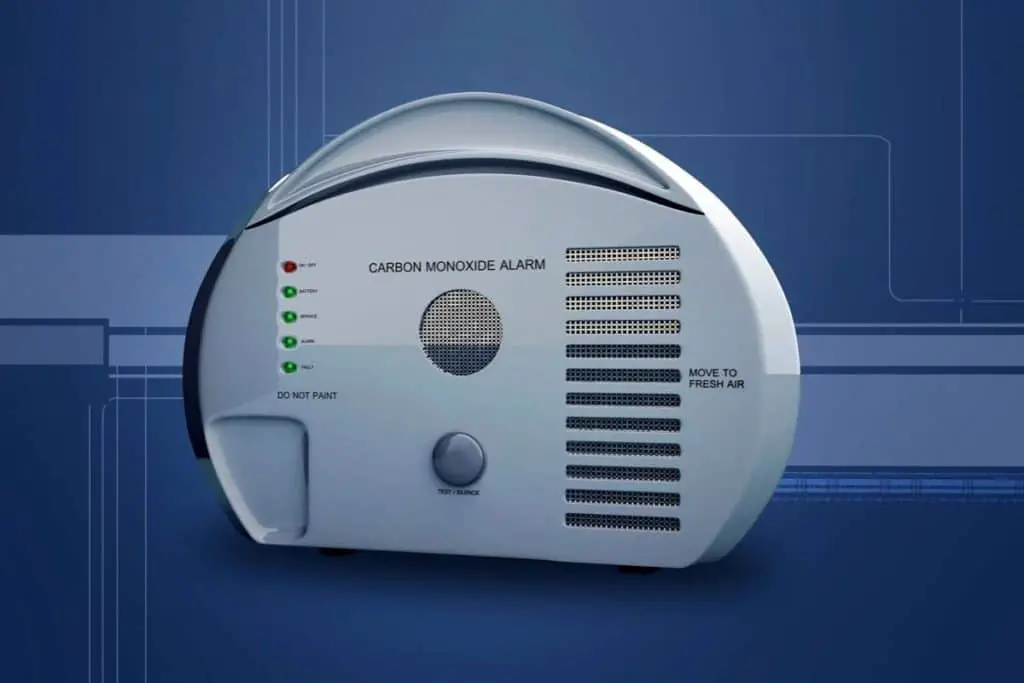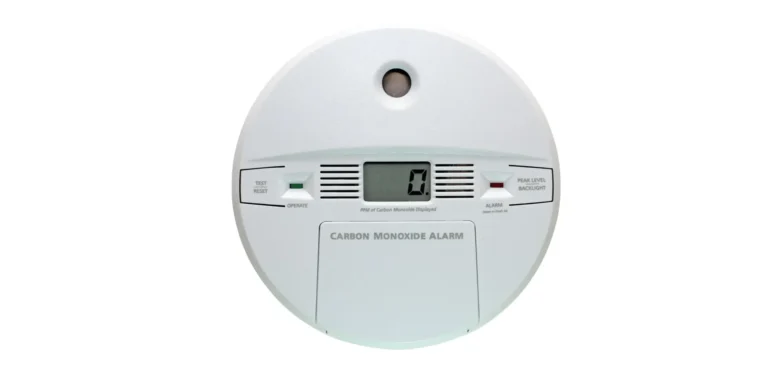Introduction
What Triggers a CO Alarm: Incomplete combustion of fossil fuels like coal, oil, and natural gas produces colorless, odorless, and tasteless carbon monoxide (CO). It is called the “”silent killer”” because it is nearly hard to detect without a carbon monoxide monitor. These gadgets notify people to carbon monoxide in the air so they can protect themselves and their families.
In addition to faulty appliances, other potential sources of carbon monoxide include blocked or damaged chimneys, clogged vents, and cracked heat exchangers. These issues can prevent the proper ventilation of combustion gases, leading to a buildup of carbon monoxide in the home. It is important to regularly inspect and maintain these systems to ensure they are functioning correctly and not posing a risk to your health and safety.
Another factor that can set off a carbon monoxide detector is the presence of a nearby vehicle or generator that is running in an enclosed space, such as a garage or basement. Carbon monoxide is a byproduct of internal combustion engines, and if these engines are operating in an area with poor ventilation, the gas can quickly accumulate and reach dangerous levels. It is crucial to never run a vehicle or generator indoors, as this can lead to carbon monoxide poisoning.

What can falsely set off a carbon monoxide detector?
Carbon monoxide detectors are essential devices that help protect us from the dangers of carbon monoxide poisoning. They are designed to detect the presence of this odorless and colorless gas, which can be deadly if inhaled in high concentrations. However, there are certain situations where a carbon monoxide detector may falsely set off an alarm, causing unnecessary panic and confusion.
One common cause of false alarms is a malfunctioning detector. Over time, carbon monoxide detectors can become less accurate or even stop working altogether. This can be due to a variety of factors, such as expired sensors, faulty wiring, or a dead battery. It is important to regularly test and replace your carbon monoxide detectors to ensure they are functioning properly.
Another potential cause of false alarms is the presence of other gases or chemicals that can trigger the detector. For example, certain cleaning products, solvents, or aerosol sprays can release chemicals that mimic the effects of carbon monoxide. Additionally, cigarette smoke or exhaust fumes from vehicles can also set off a carbon monoxide detector. It is important to be mindful of these potential triggers and avoid using or exposing your detector to these substances.
In some cases, environmental factors can also lead to false alarms. High humidity levels or extreme temperatures can affect the sensitivity of a carbon monoxide detector, causing it to go off when there is no actual danger. It is important to place your detector in a location that is free from excessive moisture or extreme temperature fluctuations.
What else can trigger a carbon monoxide detector?
Carbon monoxide detectors are designed to detect the presence of carbon monoxide gas in the air. This gas is odorless, colorless, and tasteless, making it difficult to detect without the help of a detector. While carbon monoxide is commonly associated with faulty furnaces or other heating systems, there are several other sources that can trigger a carbon monoxide detector.
One common source of carbon monoxide is a gas-powered generator. These generators are utilized during power outages and in isolated areas without electricity. Unventilated generators can emit large levels of carbon monoxide gas, which can trigger detectors. It is important to always use generators in well-ventilated areas and to never use them indoors or in enclosed spaces.
Another potential source of carbon monoxide is a malfunctioning vehicle. If a car or truck is left running in an enclosed space, such as a closed garage, carbon monoxide can build up and trigger a detector. This is why it is important to never leave a vehicle running in a closed space, even if the garage door is open.
These appliances can release CO if improperly installed or maintained. Gas appliances must be frequently inspected and vented outside.
Unvented fireplaces and wood-burning stoves emit carbon monoxide. Burning wood or other organic materials produces carbon monoxide. If the chimney or venting system is clogged, this gas can build up and trigger a detector.
Can a carbon monoxide detector go off falsely?
CO detectors warn occupants of the danger of CO in the air. However, various things might cause a carbon monoxide detector to incorrectly alarm, causing panic or confusion.
Detector failures often cause false alarms. CO detectors might lose accuracy or stop operating over time. Failure of sensors, wiring, or batteries can cause this. Test and replace carbon monoxide detector batteries regularly to ensure proper operation.
Other air gasses or compounds can trigger the detector, causing false alerts. Cleaning products, solvents, and paint fumes might emit carbon monoxide-like gases that trigger the detector. Carbon monoxide detectors can potentially give false warnings due to high humidity or harsh temperatures.
Faulty detector installation or location might also cause false alerts. Install carbon monoxide detectors at least 5 feet above ground and away from heat and moisture. Due to natural emissions from furnaces, water heaters, and kitchen appliances, placing a detector too close can cause false alerts.
What level triggers a carbon monoxide detector?
Carbon monoxide detectors are essential devices that help protect us from the dangers of carbon monoxide poisoning. Carbon monoxide (CO) is a colorless, odorless gas that can be deadly if inhaled in high concentrations. Therefore, it is crucial to understand what level triggers a carbon monoxide detector.
These devices detect carbon monoxide gas in the air and inform us when it becomes unsafe. Carbon monoxide detectors trigger at different levels depending on model and brand. Most CO detectors sound an alert when air CO concentration reaches a specified threshold.
Typically, a carbon monoxide detector alarms at ppm. An alert should sound when the airborne carbon monoxide concentration reaches 70 ppm or greater over a particular length of time.
Carbon monoxide detectors alarm at different levels depending on model and brand. Generally, a carbon monoxide detector should sound an alarm when the air concentration reaches 70 ppm or greater over time. To keep your carbon monoxide detector working and protect yourself and your family from poisoning, observe local laws.
Is carbon monoxide easily detected?
Carbon monoxide is a colorless, odorless, and tasteless gas that is produced by the incomplete combustion of fossil fuels such as coal, oil, and natural gas. It is highly toxic and can be deadly if inhaled in high concentrations. Therefore, it is crucial to have a reliable method of detecting carbon monoxide in order to prevent potential health hazards.
Carbon monoxide detectors work by utilizing sensors that can detect the gas even at low concentrations. These sensors are usually made of electrochemical cells or metal oxide semiconductors, which react with carbon monoxide to produce an electrical signal. When the concentration of carbon monoxide reaches a dangerous level, the detector triggers an audible alarm to alert the occupants of the building.
In addition to carbon monoxide detectors, there are also portable carbon monoxide detectors available in the market. These devices are small and lightweight, making them easy to carry around. They are particularly useful for individuals who work in environments where carbon monoxide exposure is a concern, such as construction sites or garages.
Carbon monoxide detectors are designed to detect the presence of carbon monoxide gas, which is produced by the incomplete combustion of fuels. Common sources of carbon monoxide include gas-powered appliances such as furnaces, water heaters, and stoves. Other potential sources include fireplaces, wood-burning stoves, and generators. Additionally, vehicles left running in enclosed spaces, such as garages, can also produce dangerous levels of carbon monoxide.
It’s important to note that carbon monoxide is odorless and colorless, making it difficult to detect without a carbon monoxide detector. This is why it’s crucial to have a functioning detector in your home, as it can alert you to the presence of this deadly gas.
Are there specific household appliances or equipment that can activate a carbon monoxide detector?
These equipment should be frequently inspected and maintained to prevent leaks and malfunctions that could activate a carbon monoxide detector.
Equipment other than domestic appliances can trigger a carbon monoxide detector. If your garage is attached to your home, vehicles left running inside can emit carbon monoxide and trigger the alarm. If your workshop or storage area has gas-powered tools or machines, they might also emit carbon monoxide. To avoid carbon monoxide detector activation, these places must be well-ventilated and equipment utilized in a well-ventilated room.
Can environmental factors, such as weather conditions or air quality, cause a carbon monoxide detector to go off?
Carbon monoxide detectors detect the gas generated by incomplete fossil fuel burning. Carbon monoxide is primarily released into homes by malfunctioning fuel-burning equipment, but environmental variables can also contribute.
Weather can trigger a CO detector. High humidity or heavy rains can cause moisture to infiltrate into a home’s walls or foundation and damage fuel-burning appliances like furnaces and water heaters. This damage can produce carbon monoxide gas, which a detector can detect.
Air pollution can trigger a carbon monoxide detector. Carbon monoxide levels may be high in locations with high air pollution or industrial emissions. This can trigger a carbon monoxide detector even without any broken equipment. Remember that carbon monoxide detectors are sensitive and can detect very low quantities of gas, making them crucial home safety devices.
Are there any potential false alarms that can activate a carbon monoxide detector?
Yes, there are several potential false alarms that can activate a carbon monoxide detector. One common cause is a malfunctioning detector itself. Over time, carbon monoxide detectors can become less accurate or may start to give false readings. It is important to regularly test and replace detectors to ensure their reliability.
Another potential cause of false alarms is the presence of other gases or chemicals in the air that can trigger the detector. For example, certain cleaning products or solvents can emit chemicals that may set off a carbon monoxide detector. It is important to be cautious when using such products and ensure proper ventilation to prevent false alarms.
How sensitive are carbon monoxide detectors in detecting low levels of carbon monoxide gas?
These detectors measure airborne carbon monoxide and warn when it reaches a specified level. Most carbon monoxide detectors can detect 30 ppm.
Although the detector may not sound an alarm at low carbon monoxide gas levels, it will detect and measure the gas. This is essential because even low levels of carbon monoxide can impair human health over time.

Conclusion
There are several factors that can set off a carbon monoxide detector. Carbon monoxide is a colorless and odorless gas that can be extremely dangerous if not detected early. Therefore, having a functioning carbon monoxide detector is crucial for the safety of your home and family.
One common cause of a carbon monoxide detector going off is a malfunctioning appliance. Appliances such as furnaces, water heaters, and stoves can produce carbon monoxide if they are not properly maintained or if there is a leak in the system. It is important to have these appliances regularly inspected and serviced to ensure they are functioning correctly and not emitting dangerous levels of carbon monoxide.
Another factor that can set off a carbon monoxide detector is poor ventilation. If a room or area is not properly ventilated, carbon monoxide can build up and trigger the detector. This can occur in areas such as garages, basements, or rooms with blocked or obstructed vents. It is important to ensure that these areas have proper ventilation to prevent the accumulation of carbon monoxide.
Lastly, a carbon monoxide detector may go off if there is an actual carbon monoxide leak in your home. This could be due to a variety of reasons, such as a faulty gas line, a cracked chimney, or a malfunctioning vehicle in an attached garage. If your carbon monoxide detector goes off, it is important to immediately evacuate the premises and contact emergency services.

